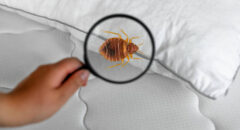all of the homes we studied,” study first author Robin Dodson said in the news release.
In a statement, a group representing furniture makers said the industry has been caught between legislative demands to make products both fire-resistant and at the same time free of hazardous chemicals.
“In 1978, the industry established the Upholstered Furniture Action Council (UFAC) and released voluntary upholstery construction guidelines that . . . combine to make an upholstered piece resistant to ignition by a smoldering cigarette,” the American Home Furnishings Alliance (AHFA) said in the statement. And, it added, “over the past 25 years, the incidence of household fires involving upholstered furniture in the United States has been reduced by more than 85 percent.”
However, part of that success has been based on the incorporation of flame-retardant chemicals in upholstery, AHFA said.
“Throughout nearly four decades of debate over how best to reduce the number of residential fires that involve upholstered furniture, AHFA has steadfastly maintained the position that product modifications should be made only as they are proven safe, effective and affordable for the greatest number of consumers,” the group said in the statement.
RELATED: 6 Things In Your Home That Can Cause Cancer
Reducing your exposure
In addition to your couch flame retardant chemicals can be found in:
- Changing table pads
- Car seats
- Baby carriers
- High chair pads
The easiest way to reduce exposure to TDCPP, according to Toxic-Free Future is to avoid furniture and baby products with polyurethane foam, and seek alternatives containing cotton, wool or polyester. If you are seeking a product that contains foam, ask the manufacturer whether it contains added flame retardants such as TDCPP.







